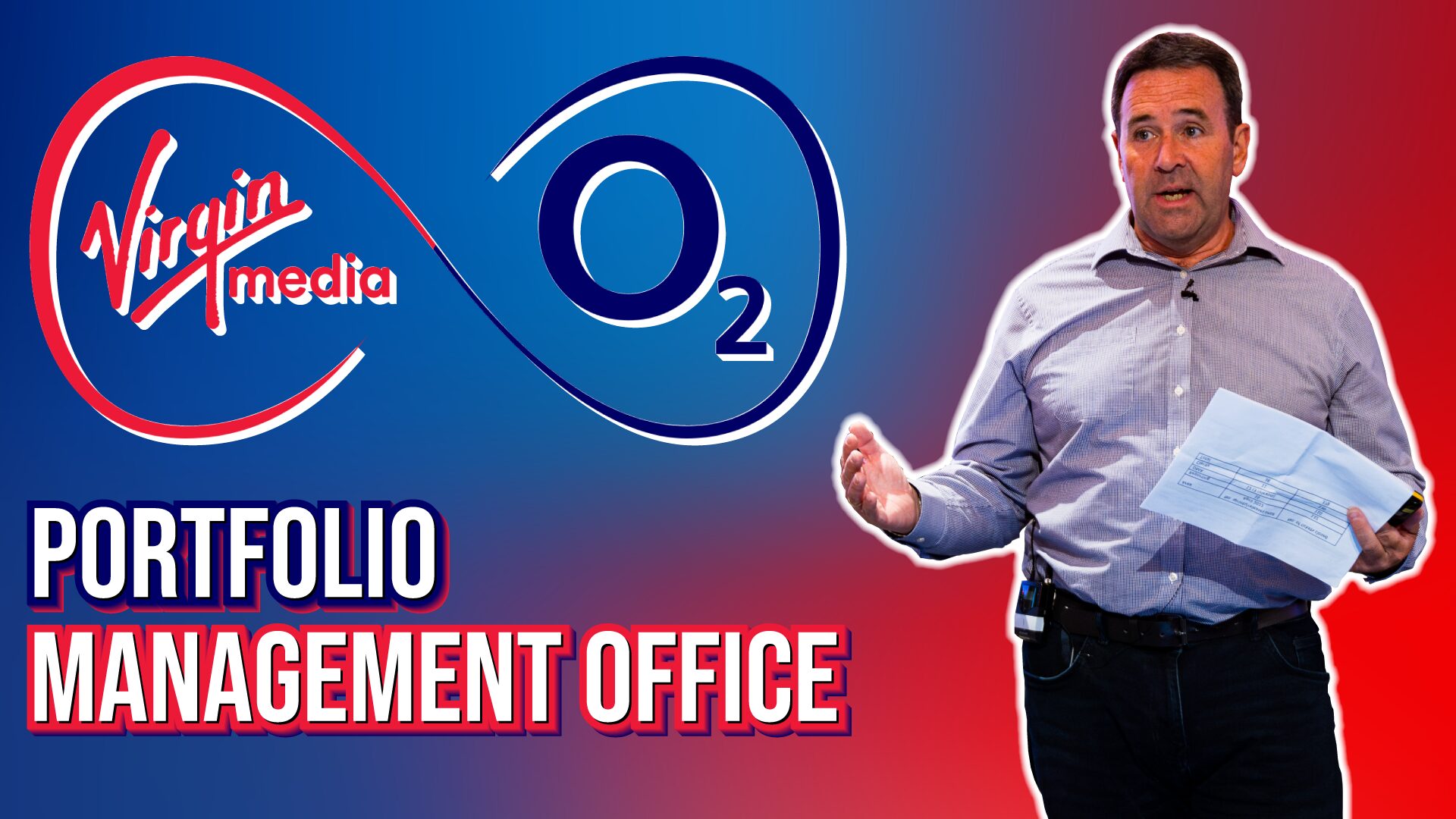Watch back all our PMO Conference sessions
The Virginmedia and O2 Portfolio Management Office – PMO Conference 2023
How does a PMO create a new standard for delivery within a Framework ensuring the ‘best of both’ is retained when two Telecommunications giants merge
When O2 and Virginmedia merged in June 2021 they needed to create a standard single way of governing and delivering in excess of 1000 projects every year!
This is the story of how their two PMOs became a unified Portfolio Management Office and the journey they undertook from the first introductory meetings to the launch of the Framework and the continued transformation that they are delivering today.
You will hear about:
- How creating a common purpose creates the foundations for successful transformation by enabling fast decision-making that underpins rapid development and change
- How company cultures and maturity levels play a key role in the design and rollout of processes and tools.
- The challenges of rolling out change amidst companywide change
- The safeguards and techniques deployed to ensure a successful launch and continued transformation
- The first year of their transformation – the Lessons Learned
Recorded Session
Presentation Deck
Download the DeckSession Summary
This session features the process of merging two companies, Virgin Media and O2, into a joint venture and what happened to the PMO. Ian Finch describes the challenges and decisions made to create a common delivery framework that incorporates the best practices from both organisations.
There was also lots of work involved in aligning the project management processes and systems used by the two companies. Ian’s role focused on managing this transformation which included the senior leadership team’s involvement, and the development of a delivery framework. It’s a detailed account of the journey to merge the two companies and establish a common way of working.
Leadership is Key
 Ian explains that the executive committee of the new organisation was established, bringing stability to the leadership. He talks about how they needed to merge the project management approaches of both companies, which had different terminologies and processes. They found that many of the activities and gateways were similar, which made the merger process smoother.
Ian explains that the executive committee of the new organisation was established, bringing stability to the leadership. He talks about how they needed to merge the project management approaches of both companies, which had different terminologies and processes. They found that many of the activities and gateways were similar, which made the merger process smoother.
Additionally, he mentions the need for a system strategy for delivery, which involved evaluating the systems used by both companies and determining which should be integrated into the new framework.
Ian also touches on the challenge of convincing senior leaders, who were going to use the framework, of the proposed changes. He highlights that they were dealing with multiple senior leaders, each with their teams, which added complexity to the decision-making process.
Using OKRs
As part of the transformation project, the implementation of OKRs (Objectives and Key Results) were used. The goal of the merger was to reduce the number of systems and tools used in the organisation to three. The concept of Key Results for OKRs, focuses on four key stages: starting a project, baselining project timelines, ensuring technical readiness, and commercial launch readiness. This was a learning curve and gave many lessons learnt along the way.
There were several points highlighted, including the challenges of influencing and getting people to do things within the transformation project which led the way to the introduction of “minimal viable governance” and how it empowers project managers and teams to make decisions. The use of a “customer promise report” to track commitments and hold teams accountable is also mentioned.
Tight Timelines
 In the beginning of October, the executive committee decided to establish a front door to control projects and integrate them into the roadmap. The responsibility for this task fell on Ian, and it needed to be operational by the end of October.
In the beginning of October, the executive committee decided to establish a front door to control projects and integrate them into the roadmap. The responsibility for this task fell on Ian, and it needed to be operational by the end of October.
Simultaneously, Lisa, a colleague of Ian’s, had to create a quarterly planning process for the entire organisation. This led to close collaboration between Ian and Lisa, as the front door project was an exception to the quarterly plan but essentially aligned.
The absence of a quarterly plan initially posed challenges, and they had to trial the exception process to get people accustomed to having a plan.
During October and November, Ian and Lisa were both on a 45-day notice period due to the risk of one of them leaving. Lisa eventually decided to leave, while Ian remained in his role.
The launch of a new delivery framework happened in March, involving extensive training for over 2000 people. Throughout the process, Ian emphasised the importance of being willing to fail fast and adapt.
Key Points
- Emphasis on the importance of the voice of the customer and the need to make customers advocates for changes.
- Mention of using buzzwords like “people over process” to prioritise a service-driven approach.
- A focus on building a learning culture and continuous improvement within the team.
- Description of automating engagement and aligning with Objectives and Key Results (OKRs).
- Efforts to improve the look and feel of the existing framework and make it less serial and process-oriented.
- The use of Google Cloud Platform for data and analytics, as well as the introduction of weekly communication updates to keep the organisation informed.
- The importance of naming communication materials appropriately to increase readership.


